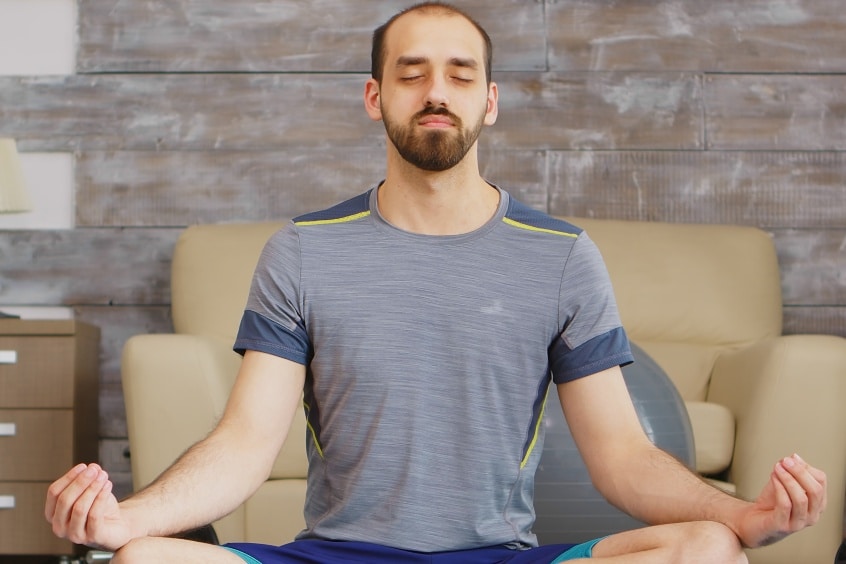


Are you one of those people who doesn’t particularly mind washing the dishes? Or folding laundry? Perhaps you genuinely enjoy reorganizing your bookshelves or closets. Some people feel very relaxed while driving their car on the open road.
There’s something peaceful and grounding about having nothing to focus on except for the task in front of you.
As humans, we have the tendency to always be thinking about the past or worrying about the future. We are seldom immersed in the “now.” This sounds a little cliché, but there are many benefits to being wholly focused on the present moment.
Mindfulness is the practice of being fully present and aware of where we are and what we’re doing without being particularly reactive or overwhelmed by what is happening around us.
Achieving mindfulness is easier said than done for most of us. It’s not something that we just spontaneously know how to do once we decide to do it. Like most things worth doing, it takes effort and practice. Mindfulness requires your active participation – at least when you first begin to practice.
Psychologist Scott Bishop defines mindfulness as “nonelaborative, nonjudgmental, present-centered awareness in which each thought, feeling, sensation that arises … is acknowledged and accepted as it is.”1
Our default state of being tends to be one of criticism and judgment. We have evolved by keeping ourselves safe from danger. We look for things to fix, we criticize our own actions and the actions of others, and we judge ourselves and the world we live in. This is how we protect ourselves, and keep ourselves safe.
“Judgement” is the key word to understanding everything that mindfulness is not. The purpose of mindfulness is to be truly aware of the present moment without judging it.
Imagine yourself trying something new and challenging, such as baking bread for the very first time. You’re likely a little nervous, making sure to measure out the ingredients just so, remaining cautiously aware of not “over-mixing” the dough. You wait hours for the dough to rise, and you put it in the oven, wait some more, then take it out only to discover an unrecognizable mess!
What is your first thought? Likely something along the lines of “Well, that was a huge failure. I guess I’m just no good at baking bread”.
Now imagine baking bread with a curious and active five-year-old. That kid wants to experience everything, right? The measuring, the pouring, the mixing, and definitely kneading the dough with her bare hands! The perfect loaf of bread is not the ultimate goal for her. Trying something new is. Playing with the dough is. Spending time in the kitchen with you is.
The child is not concerned with the end results of bread baking. She’s in it for the adventure, the experience, the play. And when the bread is no good? She may feel sad about it – for about a minute. Or maybe she’ll think it’s hilarious. Either way, it’s unlikely that she’ll interpret the inedible lump of dough as a “failure” on her part.
Therein lies the heart of mindfulness – to observe and experience our daily lives with curiosity and acceptance, without shame, criticism, or judgment.
Mindfulness is about focusing your awareness on the present moment.2 It means paying attention to any sensation that arises; physically, mentally, and emotionally – and accepting those sensations just as they are.
Not trying to change them, fix them, or even question them. Just being in the moment with whatever thoughts or feelings that happen to come up.
How is this beneficial? What good does it do “live in the moment?” Quite a bit, as it turns out.
Our brains are hardwired to look for patterns, and they’re really good at it.3 If you’re constantly searching for things that are wrong in the world, you’re guaranteed to find them. If you’re searching for kindness in other humans, you’ll find that in abundance as well.
When you practice mindfulness, you learn to recognize the patterns that your brain has created. And once you’ve learned to observe and recognize those patterns, you’ll become more quickly and easily able to spot early symptoms of stress, anxiety, and depression. This will make you less likely to ignore or bury warning signs of impending mental health struggles.
Mindfulness allows you to accept thoughts and feelings that arise and then manage them effectively. A regular practice of mindfulness can help you improve your mental, physical, and emotional health.
Mindfulness-based cognitive therapy (MBCT) combines mindfulness and cognitive therapy to reduce the recurrence of depression.4 The idea is to recognize the deterioration of mood (mindfully, without judgment), and then use cognitive techniques to disengage from negative patterns of thinking (“I’m spiraling again, my life sucks”) in order to stave off a depressive episode.
The stories we tell ourselves often make our mental health struggles much worse.5 The addict may think of himself as a “loser,” which may drive him to drink or use again. Someone with chronic anxiety may constantly refer to herself as a “basket-case”, which doesn’t exactly alleviate stress.
When we practice mindfulness, we step out of the stories and into the solutions. “I’m not a loser, I’m an alcoholic, and I should call my sponsor.” “I’m not a basket-case, I have anxiety, and I should do some yoga.”
Mindfulness doesn’t just improve your memory – it enhances your ability to think more clearly and flexibly. Mindfulness is simply about learning to be aware of your thoughts and feelings without judging them; this practice alone can change your thinking patterns.
Mindfulness practice means focusing for a certain period of time, which teaches your brain sustained attention.7 Shifting your thoughts away from the stories and back to the moment improves your cognitive flexibility, and the ability to suppress distracting thoughts so that you can focus on what’s in front of you and improve your cognitive inhibition.
These improved cognitive abilities will make everyday tasks and goals easier to accomplish. You’ll be able to think more quickly and clearly, causing your subsequent decisions and actions to be more efficient.
When you’re more mindful, you’re more accepting of other people’s flaws and imperfections, especially the people you love. Being more accepting of your partners’ (and other loved ones) faults makes you more satisfied in your relationships.
Mindfulness-based relationship enhancement (MBRE)8 teaches us that we aren’t perfect, flawless beings, so how can we expect our partners to be? This awareness and acceptance improve relationship satisfaction, empathy, and well-being.
Mindfulness isn’t just good for your brain. It’s good for your body too. A regular practice in mindfulness meditation shows improvements in:
One of the best things about mindfulness is that you can start practicing anytime. You don’t need to go anywhere special or do anything vastly different in your daily life. Of course, there are workshops, therapies, books, webinars, and all sorts of different things to try if you so desire, but you can also start small.9 You can start today!
Remember, it’s called a “practice” for a reason. Even the most seasoned mindfulness pro needs to practice daily. Just because it’s simple doesn’t mean it’s easy. Be patient. Be curious. Be kind to yourself.
Start a mindfulness journal and write down changes that you see, where your struggles are, and what exercises flow freely for you.
Yoga and meditation often go hand in hand. Yoga essentially has meditation built right into it, a connection between mind, body, and breath while remaining present in the moment.
The idea of meditation (sitting still for a prolonged period of time with no distractions… yikes!) can provoke anxiety for some, which is why yoga is such a great way to begin a meditative practice. Think of it as “moving meditation.”
Your body and yoga are amazing tools for practicing mindfulness.10 When you’re focused on your breath, your balance, and the sensations of the stretch, you’re in the present. You’re not fixated on yesterday or worried about tomorrow. You’re right here, right now.
If you already practice yoga, great! These tips can help you dive deeper into the meditative aspect of it. If you’ve never done yoga, don’t be intimidated! There are countless videos on the internet to get you started in the privacy of your own home. Yoga doesn’t have to look a certain way, or take place in a particular place.
A mantra is a word or phrase that you repeat in your head during meditation. This can help you both shift your mindset as you begin and rein in your thoughts when they start getting away from you. Think about your current goals or struggles and build your mantra from there. Some ideas are:
Breath is largely why yoga is so meditative. Try to make your exhales longer than your inhales. This helps your nervous system settle. When you exhale, think of releasing thoughts and beliefs that no longer serve you. When you inhale, imagine that air traveling throughout your body, carrying with it new life and fresh perspectives.
When you focus on the physical sensations in your body, you’re not stuck in your head. Notice where the stretch is. Feel your feet and hands grounding into the earth. Pay attention to where and when you start to lose your balance. Feel your muscles relaxing as you exhale. Feel your lungs expanding as you inhale.
Contrary to popular belief, meditation isn’t about being free of thoughts. It’s about not holding onto them. Notice your thought, then picture it leaving your consciousness as you exhale. If anxiety starts to bubble up, that’s ok. Just know that it is just a thought, just a feeling. It won’t last forever, and it doesn’t define you. Then exhale it out.
There is no right or wrong way to practice mindfulness, meditation, or yoga.
Mindfulness is a personal experience unique to each individual. If you’re living in the present moment with curiosity, honoring your thoughts and feelings without judgment, and giving yourself permission to just BE, then you’re doing it exactly right.